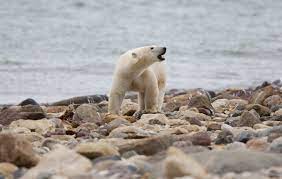Polar Bear Dying At a Fast Rate : Report

Polar bears in Canada’s Western Hudson Bay, an inland sea connected to the Arctic Ocean, are dying at a fast rate, according to a new government survey, the Associated Press reported recently.
- It also revealed that females and younger polar bears are the worst affected.
- At the time of the survey, conducted by air in 2021, researchers calculated that there were 618 bears left in Western Hudson Bay the region includes Churchill, the town that is known as ‘the Polar Bear Capital of the World’.
- When the last survey took place in 2016, there were 842 bears in the area.
- According to the researchers, Western Hudson Bay has witnessed a drop of around 50% in the population of polar bears since the 1980s.
- Polar bears are one of the most significant predators in the Arctic region and they keep biological populations in balance.
- The big kills made by them serve as a food resource for scavengers like Arctic foxes and Arctic birds.
- If polar bears aren’t able to hunt animals like seals, it can severely impact the food chain and health of the ecosystem.
- Researchers have also found that once polar bears can’t find seals to eat, they would quickly move to kill and survive on other creatures in the Arctic region.
- This would threaten the existence of species like the Arctic fox or the walrus.
- Moreover, it might also cause the overpopulation of seals, which could endanger the existence of crustaceans and fish that are an important food source for local human populations as well as other Arctic wildlife.
- The polar bear is classified as “vulnerable” on the IUCN Red List.




